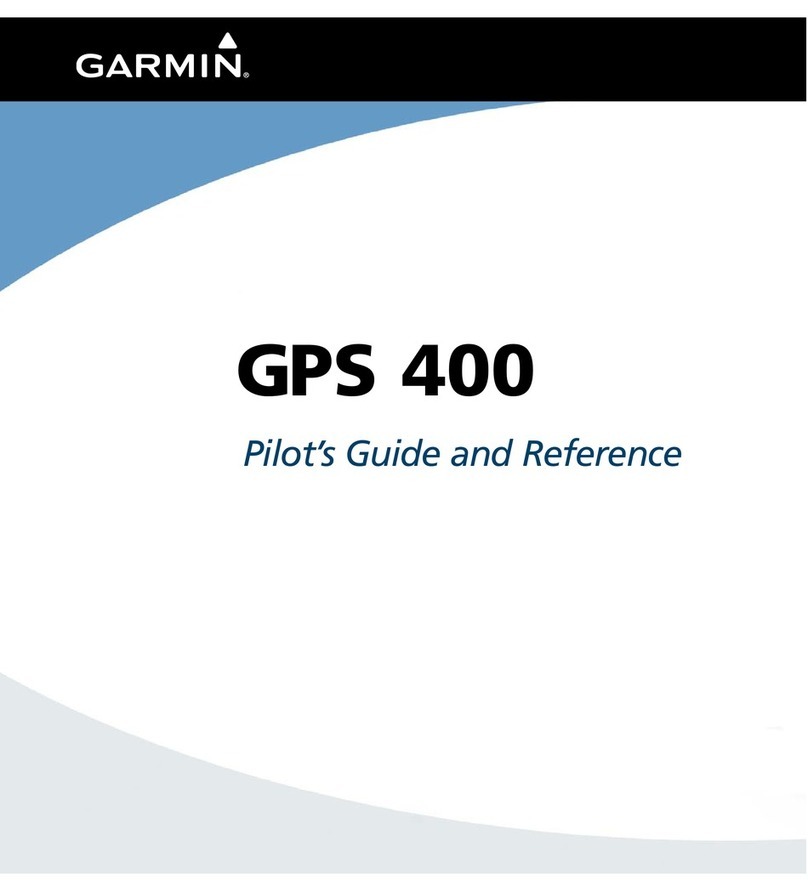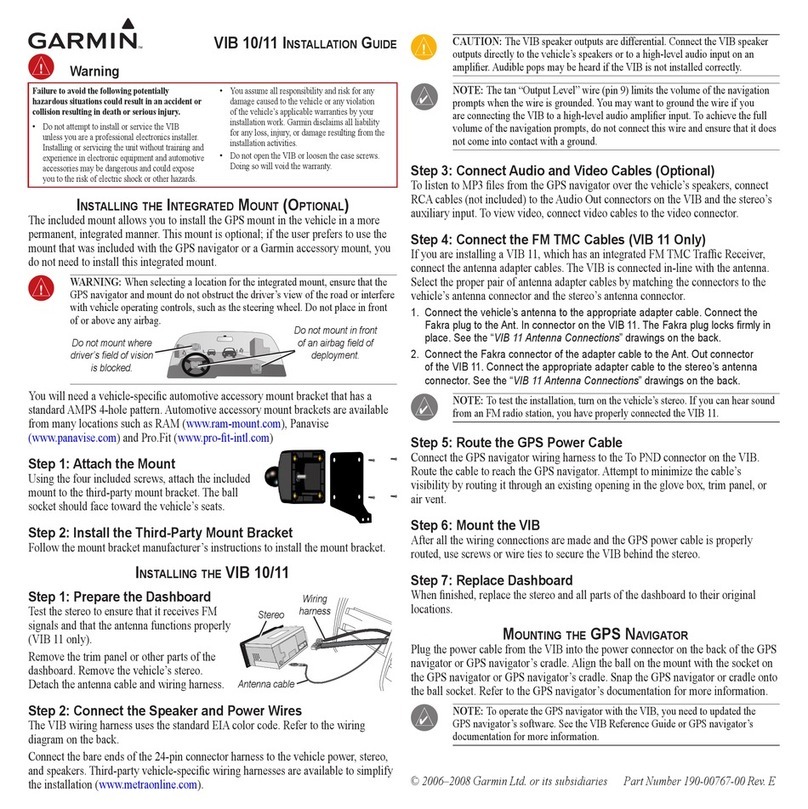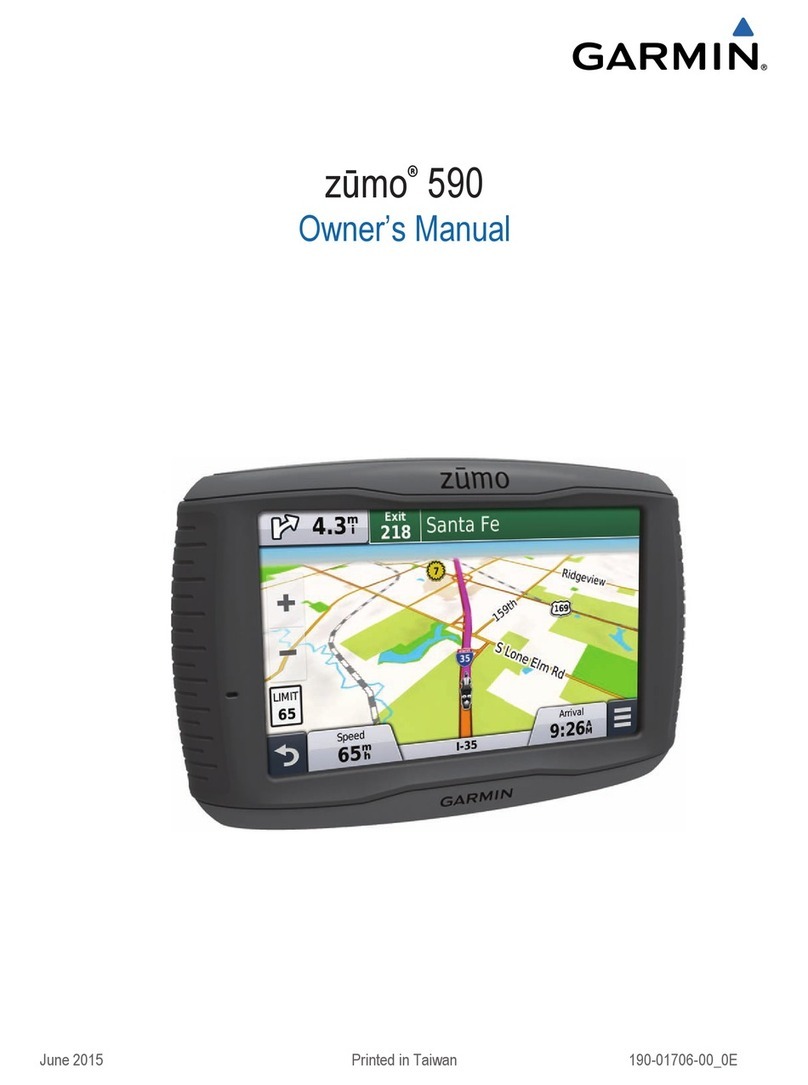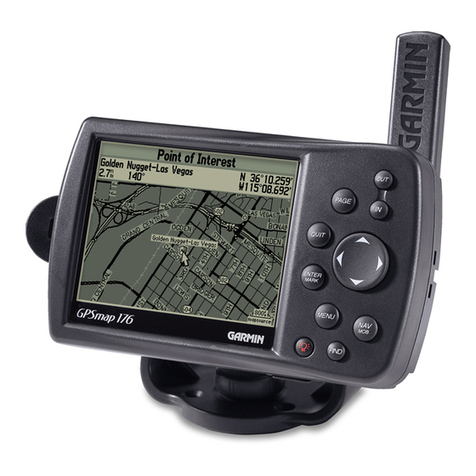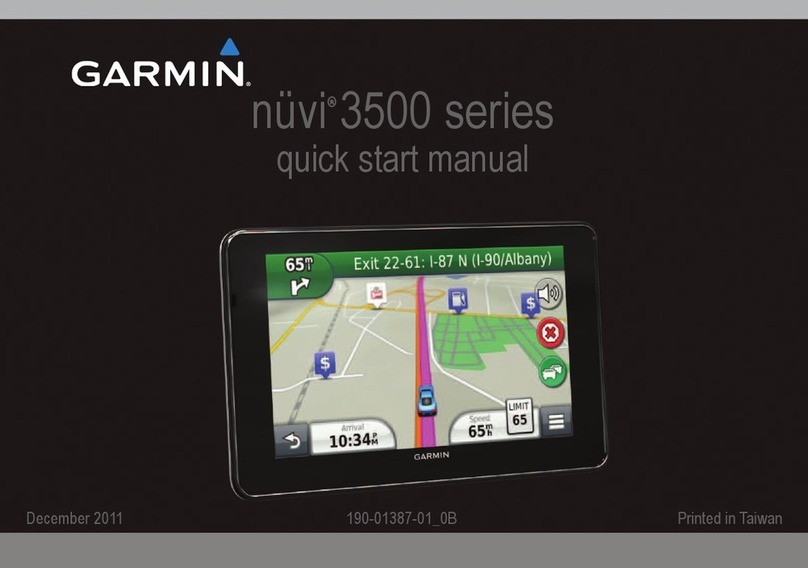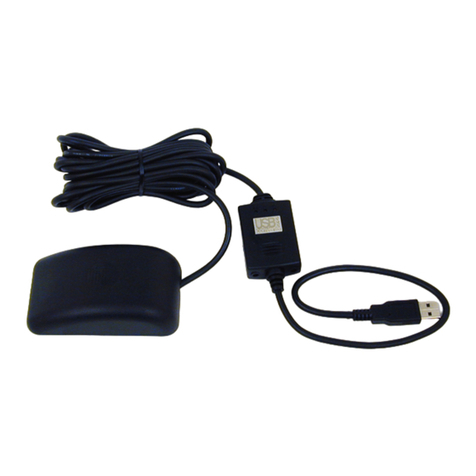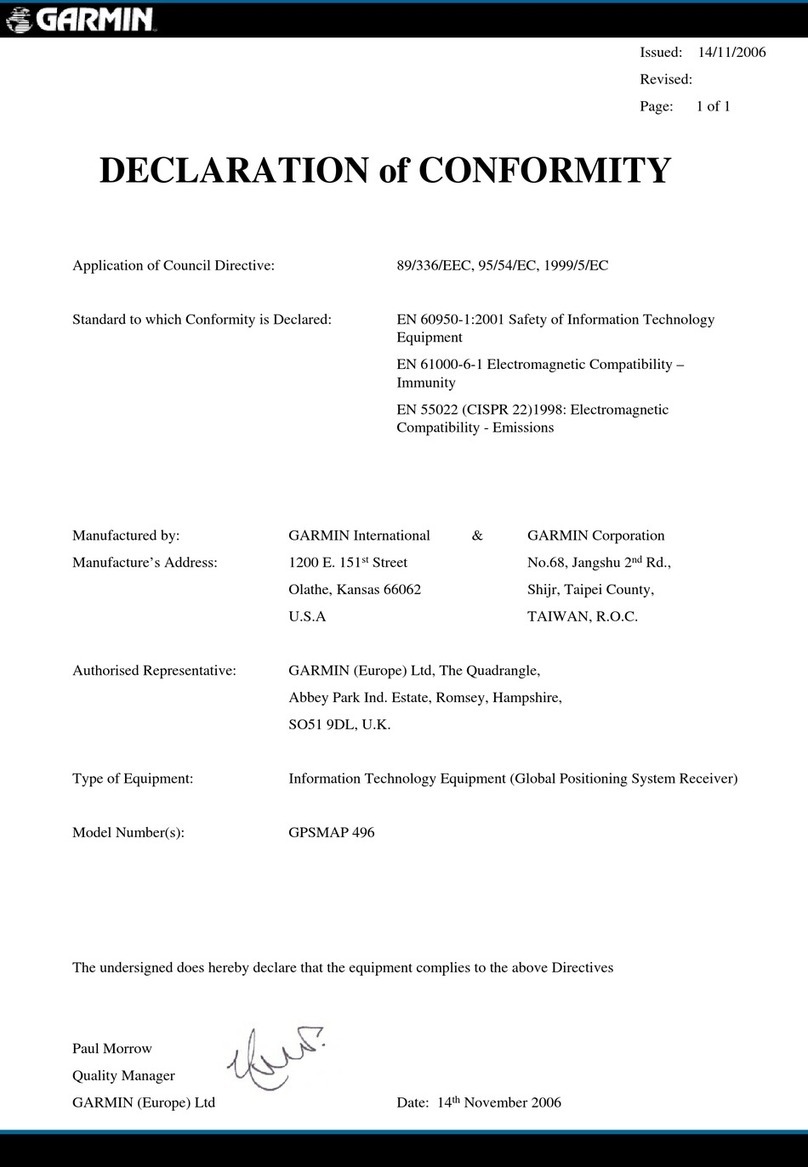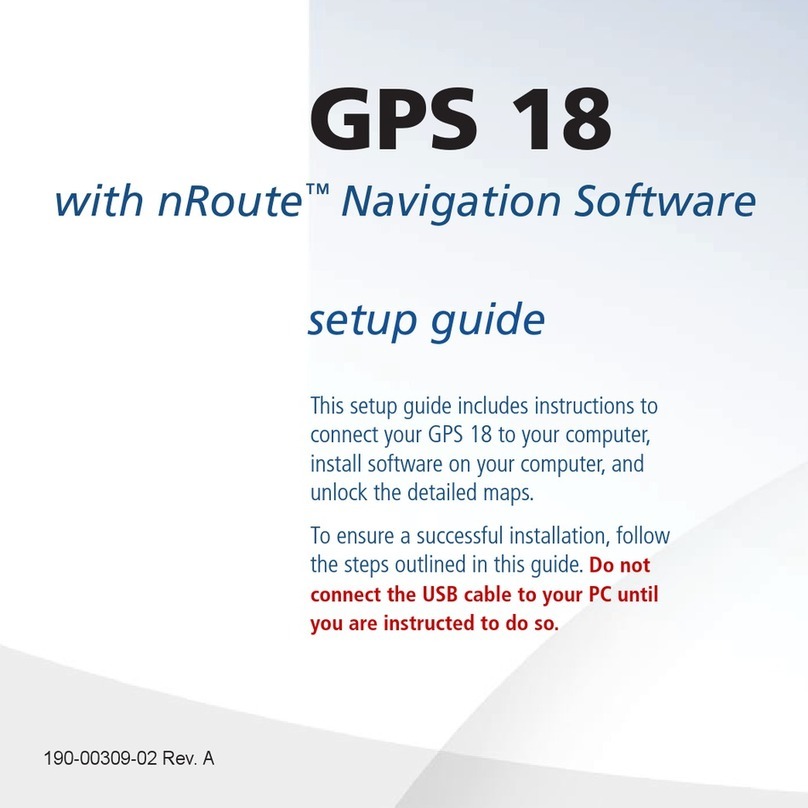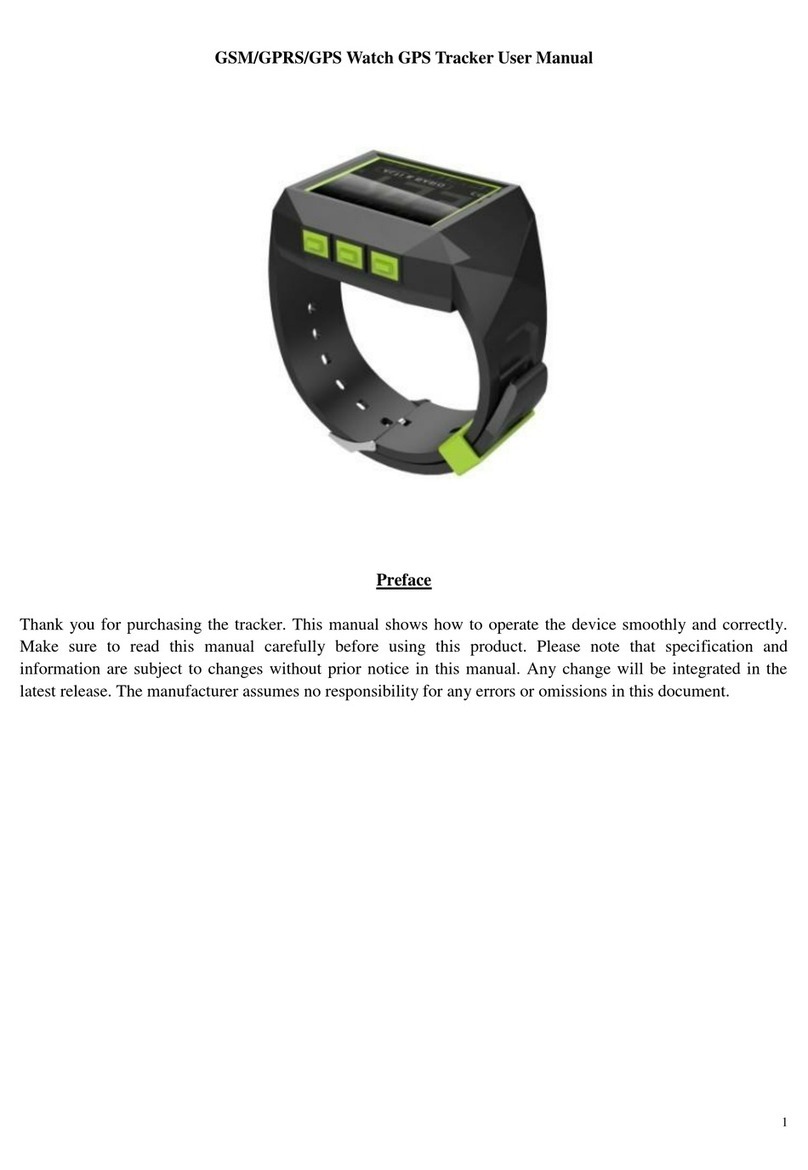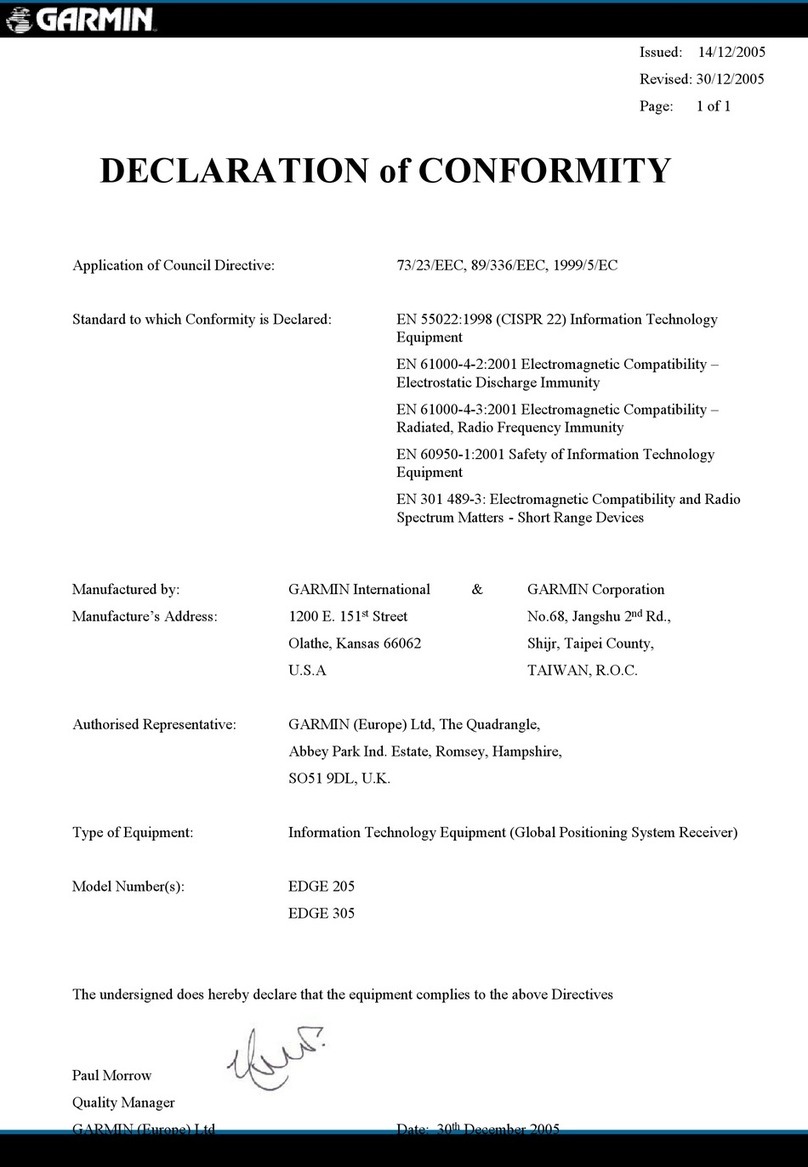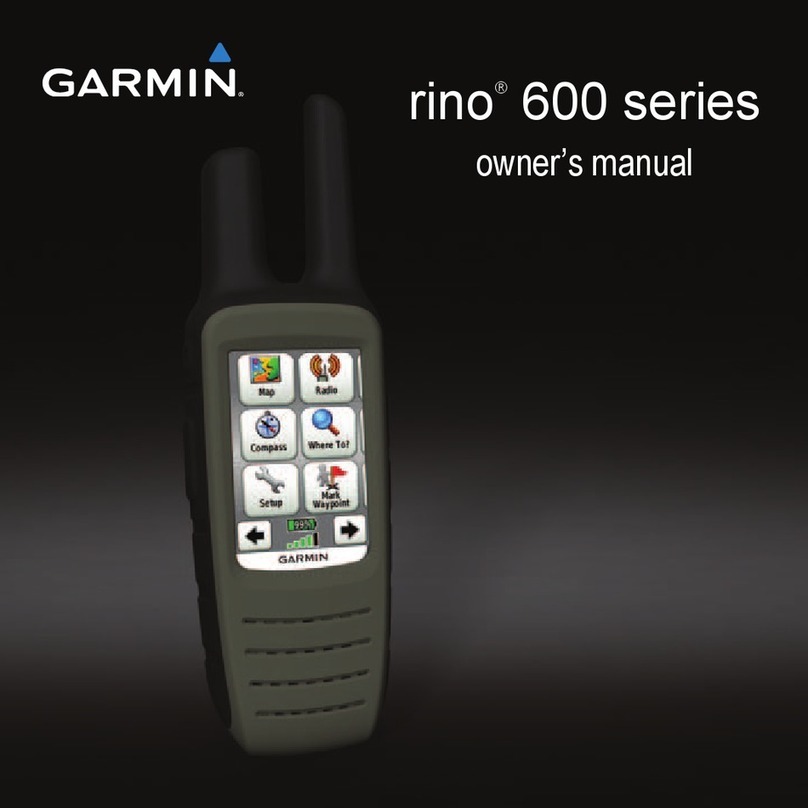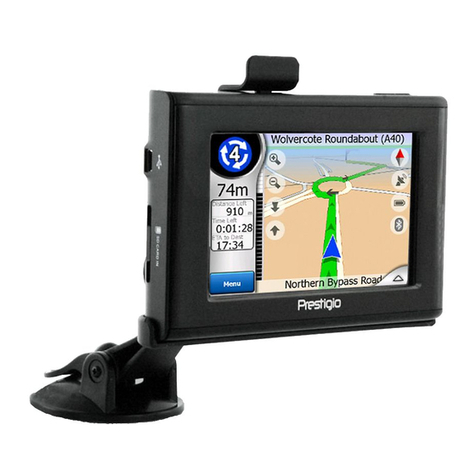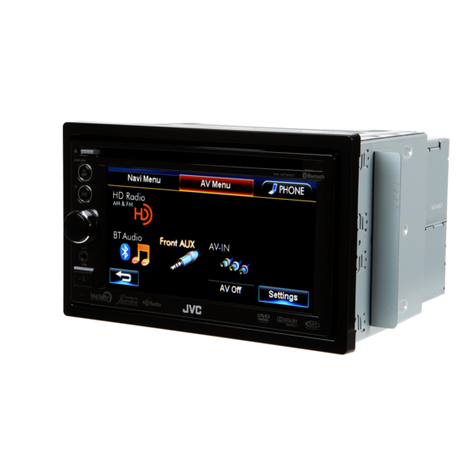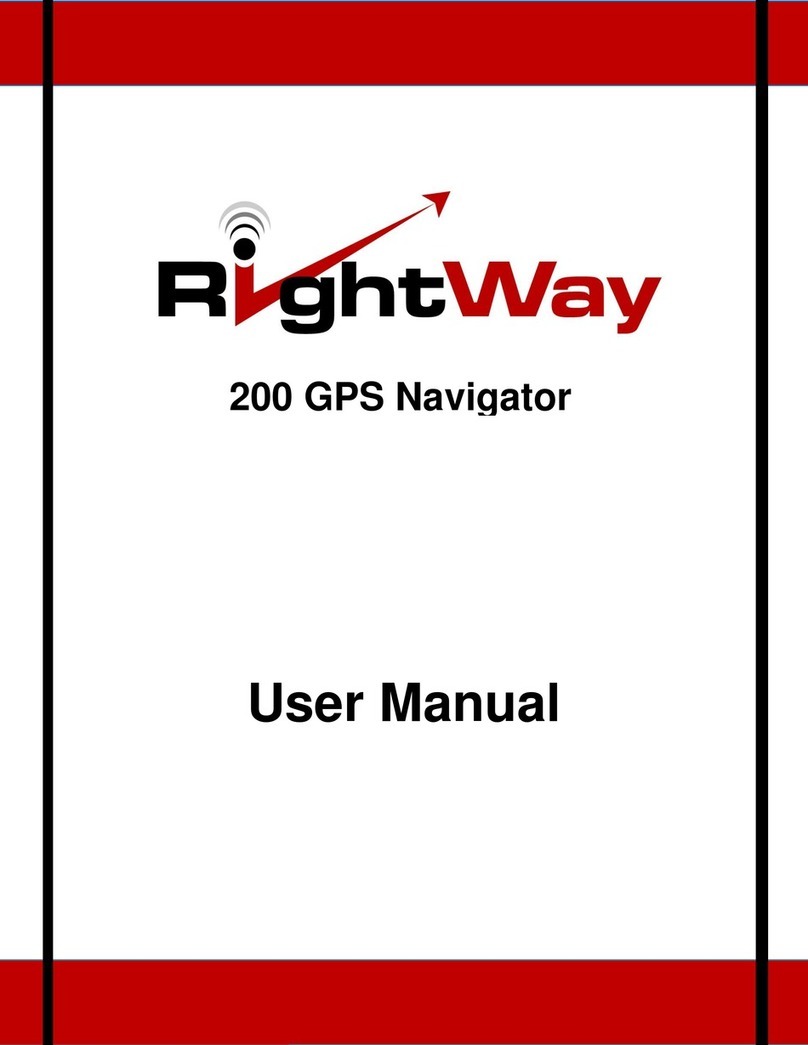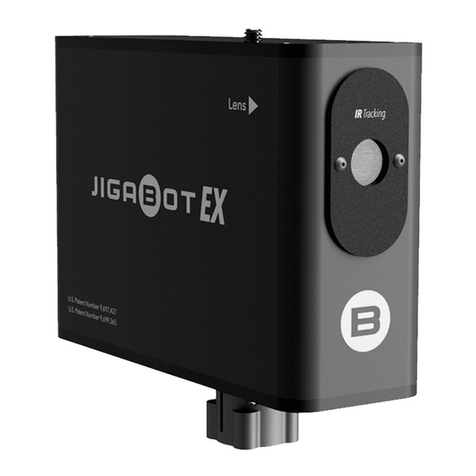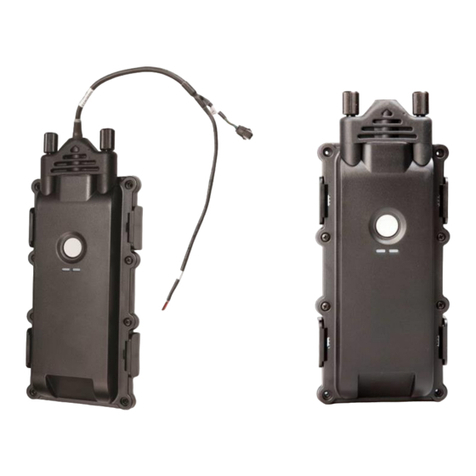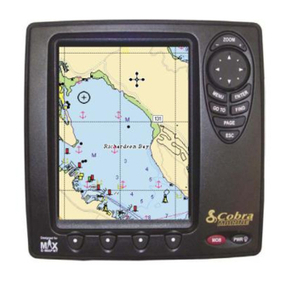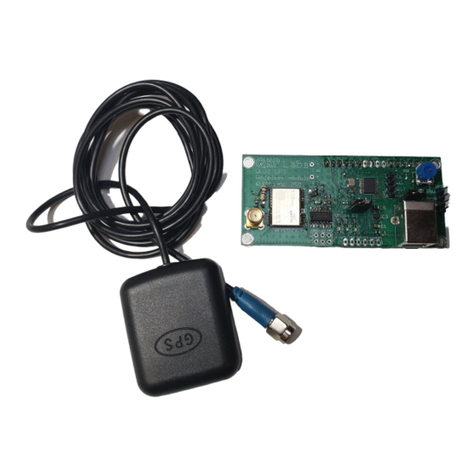
Av. Kit Install. Manual
190-00066-02 Rev. J
Page 8
RS422 input: Input capable of receiving serial OBS data from
(Pins 11 and 27) Collins Pro Line 2 EFIS DSP unit.
GPS approach select switch: Input, when grounded, arms approach mode.
(Pin 9)
GPS OBS: Capable of interfacing with a standard OBS
(Pins 14, 35, and 37) resolver.
ARINC 429 Input A & B: Input capable of receiving data from ARINC 429
(Pins 32 and 33) devices as listed in Section 4.
1.2.3.2 26 PIN CONNECTOR (J102)
Altimeter input: Capable of receiving encoded output data from any
(Pins 14-24) parallel altimeter device. (Gillham/Greycode).
GPS Sequence Switch: Input, when grounded, activates HOLD mode. See
(Pin 13) the GPS 165 Pilot's Guide, (GPN 190-00065-00), for
more information.
SECTION 2 INSTALLATION CONSIDERATIONS
Careful planning and consideration of the suggestions in this section are required
to achieve the desired performance and reliability from the GPS 165.
2.1 ANTENNA CONSIDERATIONS
2.1.1 SATELLITE VISIBILITY
The GARMIN GA 56 Low Profile GPS Antenna must be mounted on top of the aircraft.
For best performance select a location with an unobstructed view of the sky above the
aircraft when in level flight. Figure 2-1 illustrates a typical antenna installation.
For rotorcraft, locate the GA 56 antenna:
1) As far from the main rotor hub as possible. This reduces the percentage of time
the blade blocks the antenna.
2) As far below the blade surface as possible if installing the antenna under the blade.
This reduces signal distortion caused by the blades.
2.1.2 NOISE SOURCES
The antenna should be located at least 3 ft from transmitting antennas such as VHF
Comm, HF transmitter, DME, Transponder, and Radar. Cabling for the GPS 165
should not be routed near components or cabling which are sources of electrical noise.

